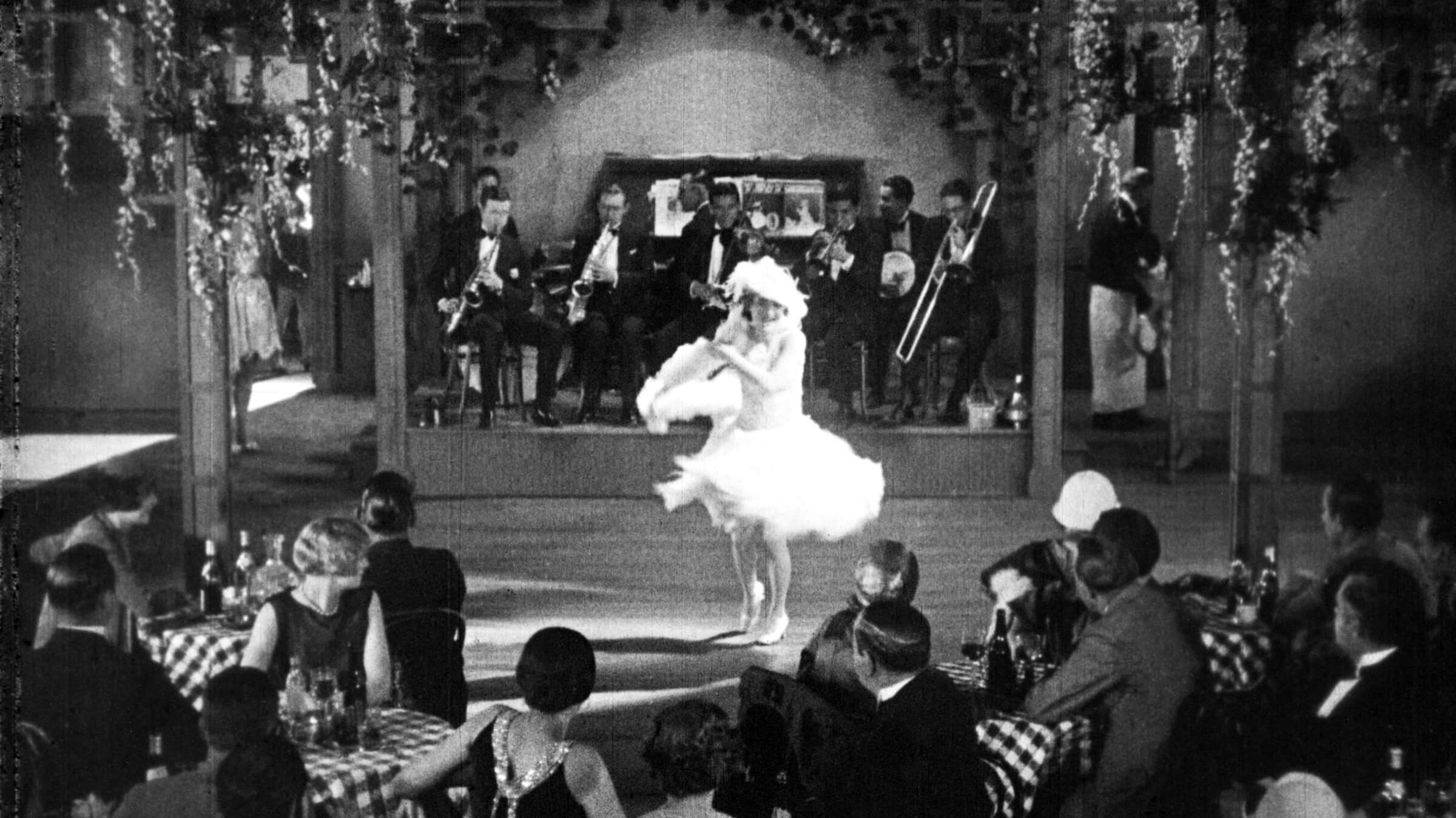Published in conjunction with the screening of Padlocked at SFSFF 2023
Dance and dancers have been on our screens since the very beginning. Think of the two men waltzing to the accompaniment of a violin in that early experimental Edison sound film. Performers from vaudeville, music hall, variety, cabaret, and ballet delighted audiences from the time of penny arcades and early projected shows on theater bills, and later the nickelodeon and the movie palace. To cite just a few: Fatima, the belly dancer (censored!); “skirt dancer” Annabelle Moore; “Serpentine” dancer Loïe Fuller and her billowing fabrics with lighting effects; even Anna Pavlova faced the cameras, recording her “dying swan” for posterity. The creative melting pot of the movies attracted a flood of talent. Vernon and Irene Castle started a ballroom revolution that swept the world, captured in one precious feature, The Whirl of Life (1915). Valentino’s gaucho tango from The Four Horsemen of the Apocalypse (1921) set hearts racing. Many other talents worked their magic behind the scenes. Ruth St. Denis and her husband Ted Shawn founded the influential Denishawn School for Dancing and the Related Arts in Los Angeles in 1915, and supplied Griffith with dancers for the Babylonian sequence in Intolerance (1916). The Russian émigré Theodore Kosloff ran a rival dance school that attracted the attention of Cecil B. DeMille.
For the most part, choreographers created dances without credit in countless silent films, a situation that only changed when talkie musicals brought Broadway dance directors to Hollywood. One of the few we can identify is Englishman Ernest Belcher, a truly unsung hero of dance who provided choreography for both The Merry Widow and Padlocked. He made his professional debut in 1909 at London’s Alhambra Theatre and eventually reached New York in 1914, performing in restaurants and vaudeville. Stricken with tuberculosis, he headed for California in 1915 to get well and found his calling, teaching and coaching. His dance school became a mecca for the movie colony, offering solid technical grounding in a wide spectrum of styles, including ballet, ballroom, acrobatic, Spanish, and Oriental. He coached John Barrymore in the comportment of a Regency dandy in Beau Brummel; created gypsy dances for Patsy Ruth Miller as Esmeralda in The Hunchback of Notre Dame; worked with Pola Negri on The Spanish Dancer; turned Baby Peggy into a mini-Señorita for Carmen Jr.; and created the ballets for The Phantom of the Opera as well as the chorus numbers for the part-talkie The Jazz Singer (look fast to glimpse a rare credit, a theater program announcing “Dances Arranged by Ernest Belcher”). Between 1918 and 1939, Belcher trained dancers and created dances, movement, or gestures for an estimated two hundred films. His influence on movies extended for decades through the work of his many students and his daughter Marge, later the wife and dancing partner of Gower Champion.
Belcher’s show-stopping waltz for The Merry Widow is a highlight of Stroheim’s film. Mae Murray as the glamorous widow, dripping with jewels, and dashing John Gilbert in full Ruritanian uniform as Prince Danilo, glide around the ballroom, with inspired moments of a kind of hesitation waltz punctuated with hovering kick steps, locked in each other’s arms in a conversation that we know will inevitably end with their romantic reunion. Belcher’s knowledge of acrobatic dance also plays a part in the film’s storytelling, focusing on Murray’s sensual physicality. As the star of a touring revue, she performs a tense acrobatic balancing act in which she assumes various poses, with her tiny feet in tightly laced high heels—perfect bait for the foot-fetishist baron played by Tully Marshall.
For Padlocked, Belcher created two very different sequences for the petite Lois Moran, already an experienced performer at age seventeen. One is a captivating cabaret number, where she whirls fairy-like, the ostrich feather plumes of her hat and dress floating in tandem. The second sequence, her audition for a “Studio for Aesthetic Dancing,” takes us into the realm of Isadora Duncan’s revolutionary free modern dance, with Moran barefoot, garbed in chiffon, her hair coiffed in Grecian style with silk ribbons. A third Belcher number may have been filmed; a still exists of Moran in Spanish costume, wrapped in a fringed shawl, wearing a wide-brimmed Cordobes hat.
The formidable Marion Morgan is even less known today than Belcher. Originally from New Jersey, she was working in California by the mid-1910s, first as a high-school gym teacher in Los Angeles and then at UC Berkeley as a dance instructor. Her Marion Morgan Dancers, a popular attraction on the Orpheum circuit, specialized in Greek dances and pantomime, marked by a blend of what one 1917 newspaper aptly called “terpsichore and calisthenics.” The all-women troupe followed a strict regime of vegetarianism and Christian Science, studied classical literature (traveling with a portable library), and never missed a chance to visit a museum. “These girls dance with their brains,” declared a 1921 article. In the early 1920s Morgan met Dorothy Arzner, the love of her life, and by the middle of the decade was working in films for Arzner and other directors. In 1926 alone, Morgan’s dancers appeared in a bacchanale in Warners’ Don Juan, and in two films by E. Mason Hopper: Paris at Midnight, featuring an elaborate Beaux Arts masquerade ball, and the marital farce Up in Mabel’s Room. An intriguing publicity still from Mabel’s Room shows a trio of cheeky bonneted chorines, each sporting one leg painted with a diamond motif, a spectacle sadly not in the existing print. Instead we see another Morgan Dancers nightclub number. Startling and imaginative, it’s staged in a tiny space, beginning and ending with eight dancers in a tight circle, holding acrobatic poses; in the main section, they proceed to strut in a circle, like figures on a Greek vase come to life. It lasts for less than a minute, but it’s so bizarre that it will stay with you forever.

